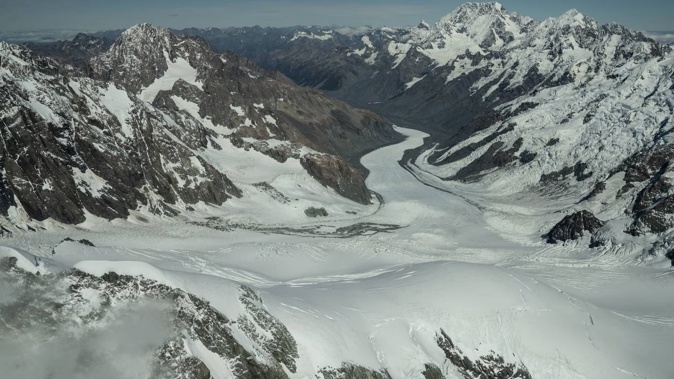
New Zealand could face a bill of $24 billion in the years leading up to 2030 in order to meet its international climate change targets, according to a Government report.
That scenario is based on New Zealand not reducing its current greenhouse gas emissions trajectory, and a high international carbon price for offsetting any emissions above the country’s target - essentially paying other countries to account for the excess pollution.
The report notes the high uncertainty around international markets, with a much lower carbon price reducing the bill to just over $3b.
But a climate change expert says with competition for carbon credits likely to only increase, it is unlikely the price will stay low, and while domestic reductions might appear expensive in the short term, they might later be a “pretty good deal”.
New Zealand has committed internationally under the Paris Agreement to reduce net greenhouse gas emissions in 2030 by 50 per cent below gross emission levels in 2005, part of global efforts to limit warming to below 1.5C.
Essentially, to meet that target, New Zealand’s emissions between 2021 and 2030 must not exceed 571 megatonnes of carbon dioxide equivalent gases (Mt C02e).
For context, in the year to June 2021, New Zealand emitted 84 Mt CO2e, or just under one-sixth of the entire budget.
If New Zealand does produce emissions greater than the budget, it must pay others to make up the difference, known as offshore mitigation, which involves purchasing carbon credits.
The report Ngā Kōrero Āhuarangi Me Te Ōhanga: Climate Economic and Fiscal Assessment 2023, published this month, was prepared by officials at Treasury and the Ministry for the Environment to collate the various future economic and fiscal implications of climate change for New Zealand.
It includes the costs of adapting to the effects of climate change, the costs of taking action to reduce emissions and the costs of not making those international obligations.
The authors state that achieving the 2030 target, or first nationally determined contribution, will “almost certainly require domestic and offshore mitigation”.
The report explores different scenarios for the cost of offshore mitigation purchases required to meet that commitment.
“These costs represent a significant fiscal risk under all scenarios considered,” the authors state.
There was a lot of variation, however, including how much New Zealand reduced emissions domestically, and “more critically”, what price New Zealand paid for any international reductions.
The authors noted the future price of international reductions was unknown as many markets were in their early stages or yet to be developed.
If the international price aligned with the average of current prices for well-established international emissions markets, New Zealand could be in for a bill of $7.7b to $9.9b, depending on how domestic emissions track.
At a carbon price assumed by the International Energy Agency (IEA) for emerging and developing economies - about $41 per tonne of CO2e on average - the bill for New Zealand could range from $3.3b to $4.2b.
/cloudfront-ap-southeast-2.images.arcpublishing.com/nzme/DUPJFTQKZJECFPDJJPTPV4QIAI.png)
The estimated costs of purchasing offshore mitigation to meet climate targets. Image / MFE, Treasury
But if the price aligned with that assumed by the IEA for advanced economies under a scenario of enhanced global climate action, essentially more competition for credits, and a price of about $227 per tonne of CO2e, New Zealand’s bill could be as high as between $18.3b to $23.7b.
Dr David Hall, climate policy director at independent science agency Toha NZ, who didn’t work on the report, said there had long been an assumption international markets would provide a “backstop of plentiful, low-cost emissions reductions”.
“Now that we’re closer to crunch time, there is an uncomfortable level of uncertainty about those assumptions.”
/cloudfront-ap-southeast-2.images.arcpublishing.com/nzme/M7H7MJSEVZCTDITY6VWGQ4VB2Q.png)
The estimated costs of purchasing offshore mitigation to meet climate targets. Image / MFE, Treasury
Hall said there would be questions about the supply and unit integrity of any low-cost carbon credits, and no reason to believe they will in fact be low-cost when 2030 arrives.
“Can we assume that developing countries will sell off their cheap abatement options and leave themselves with the expensive options when they could easily do the opposite?
“Why wouldn’t poorer countries keep the low-hanging fruit for themselves and compel richer countries to climb to the top of the tree?
“At the end of the day, it’s hard to anticipate how this will play out – which is why we need to take a precautionary approach.
“The risk is that we overlook domestic mitigation options because they seem too expensive, only to find out too late that they were a pretty good deal.”
Climate Change Minister James Shaw said the priority was to reduce emissions domestically as much as possible.
“We will then add to this by working with countries to reduce emissions in other parts of the world.
“Where this investment goes will be dependent on multiple factors, including how much New Zealand can reduce emissions domestically, technology development and the cost of accessing offshore mitigation.
“This decade is make or break for the planet, and I want to be clear: domestic action to reduce emissions is the Government’s top priority for contributing towards the NDC.”
The report also canvasses costs associated with adaptation and reducing emissions domestically.
Modelling shows that a sea-level rise of 30cm – expected to occur between 2045 and 2070 – could expose another $6b worth of buildings to at least a 1 per cent chance of flooding in a given year.
/cloudfront-ap-southeast-2.images.arcpublishing.com/nzme/D4NGEFQLFRA5FKENI6MX73HNGE.png)
Insured weather-related losses from 1968 to 2021. Image / MFE, Treasury
Other modelling shows that around 10,000 houses could become uninsurable by 2050 because of coastal flooding hazards from sea-level rise.
A Treasury-commissioned study from 2018 estimated climate change caused at least $120 million of privately insured damages from floods and $720m in economic losses from droughts in the decade between 2007 and 2017.
Data from the Insurance Council of New Zealand shows a trend of increasing privately insured damages from weather-related events (such as storms and floods) over at least the last decade. The last five years have all seen near-record levels of insured losses.
Due to increased storms and droughts, Treasury modelling shows that net core Crown debt could be higher by 3.77 per cent of GDP in 2061, and the Climate Change Commission (CCC) has estimated achieving New Zealand’s domestic targets would result in GDP in 2050 being 1.2 per cent lower than would otherwise be the case.
Hall said relying on GDP impacts was problematic, as that neglected the risks of “business as usual”, as well as the opportunities of a net-zero economy, including access to markets that prioritise low and/or zero-emissions products.
“The low-emissions transition should make many things cheaper, like energy and vehicle maintenance costs, which might mean we have greater discretionary spending and a better quality of life.”
Take your Radio, Podcasts and Music with you









